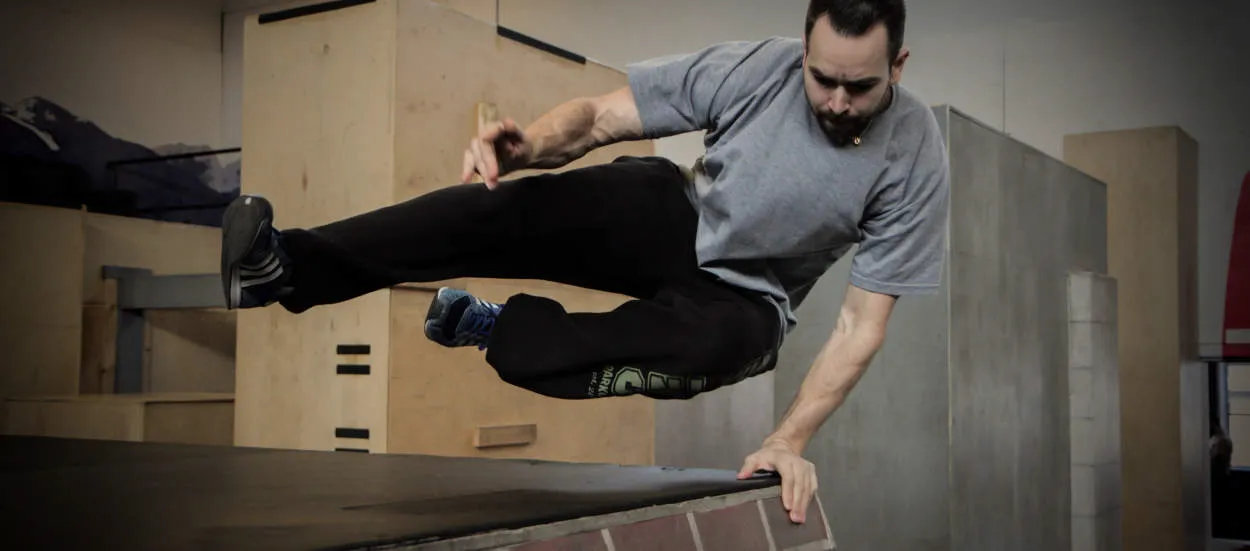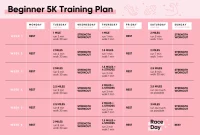Are you ready to defy gravity and push your physical limits? In this article, we dive into the world of Parkour training, uncovering the fundamental techniques, essential tips, and crucial safety measures to embark on this breathtaking discipline. Get ready to leap, climb, and roll your way through the art of movement!
Introduction to Parkour for Beginners
Parkour is a physical discipline that involves moving quickly and efficiently through an environment using only the human body. It originated in France in the late 1980s and has gained popularity worldwide since then. Parkour is not just about performing impressive stunts; it also teaches discipline, self-improvement, and overcoming obstacles.
For beginners who are interested in starting their Parkour journey, it is important to understand the core concepts and techniques involved. Parkour requires a combination of strength, agility, balance, and mental focus. Here are some key points to keep in mind:
1. Safety First
Parkour can be physically demanding and potentially dangerous. Prioritize safety by wearing appropriate protective gear and finding a suitable training location. Start with basic exercises to build strength and gradually progress to more advanced movements.
2. Master Fundamental Movements
Begin by practicing basic movements such as running, jumping, and landing. These skills form the foundation for more complex Parkour techniques. Focus on developing good form and efficient movement patterns.
3. Enhance Strength and Flexibility
Parkour requires a strong and flexible body. Incorporate strength training exercises like push-ups, pull-ups, and squats into your routine. Additionally, dedicate time to stretching to improve flexibility and prevent injuries.
4. Train Mind and Body
Parkour challenges both mental and physical limits. Develop mental resilience by setting goals, overcoming fear, and staying focused during training. Regular practice and consistent effort will yield progress over time.
5. Join a Parkour Community
Connect with experienced practitioners and join a local Parkour community. Learning from others and having a supportive network can accelerate your progress and provide valuable guidance.
Remember, Parkour is a personal journey, and progress varies from individual to individual. Embrace the process, stay motivated, and always prioritize safety. With dedication and practice, you can gradually master the art of Parkour.
Developing Agility and Strength for Parkour
Parkour is a physical discipline that involves moving efficiently through various obstacles in an urban environment. To excel in parkour, practitioners need to develop both agility and strength. These two attributes are crucial for tackling the challenges that parkour presents.
Agility
Agility is the ability to move quickly and easily. In parkour, agility is essential for navigating obstacles with precision and fluidity. To enhance agility, practitioners can focus on exercises that improve their balance, coordination, and flexibility. This may include activities such as balance beam training, agility ladder drills, and stretching routines for increased mobility.
Strength
Strength plays a critical role in parkour, as practitioners often need to perform explosive movements and overcome physical barriers. Building strength in the lower body, core, and upper body is vital. Exercises like squats, lunges, push-ups, pull-ups, and planks are beneficial for developing the necessary strength. Additionally, incorporating plyometric exercises into training, such as box jumps and clap push-ups, can enhance explosive power.
Training Tips
When training for parkour, it’s important to start with the basics and gradually progress to more complex movements. Focus on mastering fundamental techniques such as jumping, landing, rolling, and vaulting before attempting advanced maneuvers. Consistency in training is key, as regular practice allows for skill development and progressive improvement.
Safety
Parkour can be physically demanding and potentially risky. It is crucial to prioritize safety while training. Always warm up adequately before each session to prevent injuries. Wearing appropriate protective gear, such as a helmet and knee pads, is recommended. Additionally, it’s essential to train in a controlled environment and gradually increase the difficulty level as skills improve.
Conclusion
In conclusion, developing agility and strength is essential for success in parkour. By focusing on improving agility through balance and coordination exercises, and building strength through targeted workouts, practitioners can enhance their performance and overcome challenges. Remember to prioritize safety at all times during parkour training to minimize the risk of injuries.
Essential Safety Tips for Parkour Practitioners
Parkour is an exhilarating and physically demanding discipline that involves moving rapidly through urban environments. While it can be an exciting way to push your physical limits, it is essential to prioritize safety to prevent injuries. Here are some important safety tips for parkour practitioners:
- Warm up: Always begin your parkour training session with a thorough warm-up routine. This will help prepare your body for the intense movements and reduce the risk of muscle strains or pulls.
- Know your limits: Understand your own abilities and gradually progress at a pace that is comfortable for you. Pushing yourself too hard or attempting advanced techniques prematurely can result in accidents.
- Use proper footwear: Invest in a pair of sturdy and supportive athletic shoes that provide good traction. This will help you maintain grip and stability while performing parkour movements, reducing the chances of slipping or falling.
- Choose appropriate practice locations: Select suitable spaces that are specifically designed for parkour or have adequate surfaces and structures for safe training. Avoid practicing in areas with excessive heights or dangerous obstacles.
- Master landing techniques: Learning how to land properly is crucial to avoid injuries, especially when jumping from heights. Practice landing softly by bending your knees and rolling to disperse the impact across your body.
- Progress incrementally: As with any physical activity, start with basic movements and gradually progress to more challenging techniques. Proper technique and form are essential for maintaining control and staying injury-free.
- Always train with a partner: Having a training partner or practicing within a group can provide an extra layer of safety. They can spot you, give advice, and provide support if an accident were to occur.
- Stay hydrated: Drink plenty of water before, during, and after your training sessions to prevent dehydration. Proper hydration is crucial for optimal performance and overall well-being.
By following these essential safety tips, you can enjoy the excitement of parkour while minimizing the risk of injuries. Remember, safety should always be your top priority in any physical activity.
Advanced Parkour Moves and Training
Parkour training is not limited to basic techniques, but also involves mastering advanced moves. These advanced parkour moves require a higher level of skill, strength, and coordination. In this article, we will explore some of the most challenging parkour moves and provide tips for training to help you achieve mastery.
1. Wall Runs
Wall runs involve sprinting towards a wall, leaping off it, and using the momentum to reach a higher point. It requires proper foot placement, balance, and precision to execute smoothly. Start practicing on lower walls before progressing to higher ones.
2. Precision Jumps
Precision jumps involve jumping with high accuracy and landing precisely on a designated spot. This move requires exceptional control over your body and precise footwork. Start with shorter jumps and gradually increase the difficulty level by targeting smaller landing areas.
3. Cat Leaps
Cat leaps involve jumping from one wall to another, using your hands to grab onto the edge. This move requires upper body strength and quick reflexes. Begin practicing with low walls, gradually increasing the distance, and always prioritize safety.
4. Tic Tacs
Tic tacs are used to gain momentum when approaching an obstacle. They involve using the sides of walls or other surfaces to push off and redirect your movement. Mastering tic tacs helps increase fluidity and speed in your parkour runs.
5. Kong Vaults
Kong vaults are an advanced vaulting technique that allows you to clear obstacles by diving over them headfirst, using your arms to push off. This move requires strength, coordination, and confidence. Practice proper diving technique and gradually increase the height and distance.
Remember, mastering advanced parkour moves takes time and consistent practice. Always prioritize safety, listen to your body, and gradually progress as you build strength and skill. Pushing yourself beyond your limits can lead to injuries, so be mindful of your capabilities. Stay focused, stay dedicated, and enjoy the thrilling journey of advanced parkour training!
The Philosophy and Community of Parkour
Parkour, also known as freerunning, is not just a physical discipline but also an embodiment of a unique philosophy and a strong-knit community. It goes beyond simply performing impressive acrobatic moves and focuses on mastering one’s body and mind, as well as fostering a sense of camaraderie and personal growth.
The philosophy of parkour centers around principles such as adaptability, efficiency, and overcoming obstacles in both physical and metaphorical sense. Practitioners seek to train their bodies to move fluidly through their environment, finding the most efficient routes and utilizing their surroundings to overcome barriers. This philosophy translates into a mindset that encourages problem-solving, creativity, and audacity in everyday life.
Alongside the physical practice, the parkour community plays a pivotal role in shaping the discipline. Parkour practitioners share a strong bond, offering support, encouragement, and knowledge to one another. The community provides a platform for individuals to learn, grow, and connect with like-minded individuals who share their passion for movement. Whether it’s through structured training sessions, local meetups, or online forums, the community fosters a sense of belonging and unity.
Parkour training is not just about flashy moves and thrills; it also emphasizes safety and responsible practice. Each practitioner understands the importance of proper warm-up exercises, conditioning, and gradual progression. Safety is paramount, with practitioners learning to assess risks, maintain body awareness, and practice within their limits. Through this mindful approach to training, parkour becomes a lifelong journey of self-improvement.
In summary, parkour encompasses not only physical training but also a philosophy that encourages adaptability, efficiency, and overcoming obstacles. The community that surrounds parkour provides support, encouragement, and a platform for growth. With an emphasis on safety and responsible practice, parkour becomes a holistic discipline for personal development and self-expression.
Conclusion
In conclusion, parkour training offers a unique and thrilling way to improve physical fitness, agility, and mental focus. By implementing the techniques and tips discussed, individuals can enhance their parkour skills and performance. However, it is essential to prioritize safety during training, by wearing protective gear, practicing in safe environments, and gradually progressing in difficulty. With dedication and proper precautions, parkour can be an enjoyable and rewarding activity.




